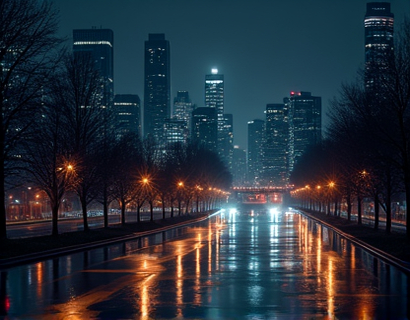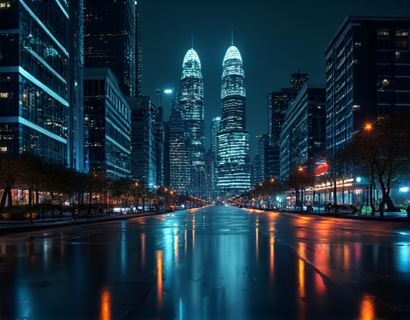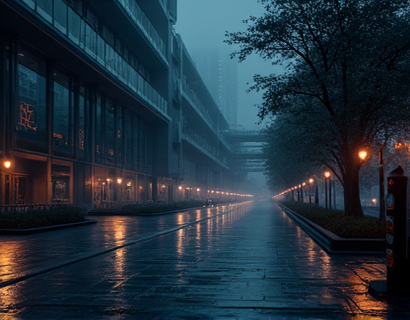Uncovering the Ancient Indus: A Traveler's Guide to Cultural Riches and Historical Marvels
The ancient Indus Valley, a cradle of one of the world's earliest civilizations, beckons modern travelers with its rich tapestry of history, culture, and natural beauty. This comprehensive guide aims to enrich your journey through this timeless region, offering deep insights into its cultural heritage, historical landmarks, and practical travel tips. Whether you are a history enthusiast or a curious traveler seeking hidden gems and local attractions, this guide will provide you with the essential resources to make the most of your visit to the Indus Valley.
Historical Background
The Indus Valley Civilization, also known as the Harappan Civilization, flourished around 2600 BCE to 1900 BCE. It was one of the earliest urban civilizations, alongside those of Mesopotamia and Egypt. The civilization was centered around the Indus River and its tributaries, spanning parts of present-day Pakistan and northwestern India. The cities of Harappa and Mohenjo-Daro are the most famous archaeological sites, showcasing the advanced urban planning and sophisticated water management systems of the time.
The Indus people were skilled in metallurgy, pottery, and craftsmanship. Their artifacts, including seals, jewelry, and pottery, reflect a high level of artistic and technical skill. The civilization's script, known as Indus script, remains undeciphered, adding an air of mystery to its history. Despite the lack of written records, archaeological findings provide a glimpse into the daily life, social structure, and religious practices of the Indus people.
Key Historical Landmarks
Visiting the historical landmarks of the Indus Valley is akin to stepping back in time. Here are some must-see sites that highlight the grandeur and ingenuity of this ancient civilization.
Mohenjo-Daro
Mohenjo-Daro, meaning "Mound of the Dead," is one of the most significant archaeological sites in the Indus Valley. Located in the province of Sindh, Pakistan, this city is renowned for its well-planned streets, advanced drainage systems, and public baths. The Great Bath, a large rectangular tank with a stepped approach, is a testament to the civilization's emphasis on cleanliness and ritual purity. The citadel, with its massive public buildings, and the lower town, with its residential areas, provide a comprehensive view of urban life in ancient times.
Harappa
Harappa, situated in Punjab, Pakistan, is another crucial site that offers insights into the Indus Valley Civilization. The site features a large granary, a central bathing complex, and a sophisticated drainage system. The discovery of the Harappa Seal, depicting a seated yogi surrounded by animals, has become an iconic symbol of the civilization. The city's layout, with its grid-like streets and standardized bricks, showcases the advanced urban planning of the Indus people.
Kalibangan
Kalibangan, located in Rajasthan, India, is known for its unique features, including a well-planned citadel and a sophisticated drainage system. The site also reveals evidence of early agriculture and trade, with findings of wheat, barley, and copper tools. The fire altars discovered here suggest religious practices involving fire rituals. The Ahar-Banas culture, which flourished here, is considered a precursor to the Indus Valley Civilization.
Dholavira
Dholavira, located in Gujarat, India, is one of the best-preserved Indus sites. It is notable for its complex water management system, including reservoirs, tanks, and channels. The site's layout, divided into an inner and outer city, reflects a hierarchical social structure. The discovery of inscribed tablets and seals at Dholavira provides valuable insights into the Indus script and administration.
Cultural Heritage
The cultural heritage of the Indus Valley is a rich tapestry woven from the threads of its ancient civilization. The art, religion, and daily life of the Indus people offer a fascinating glimpse into a bygone era.
Art and Craftsmanship
Indus artisans were masters of various crafts, including metalwork, pottery, and jewelry making. The intricate designs and high quality of their artifacts, such as the famous bronze statuette of the Dancing Girl, demonstrate their skill and creativity. Seals, often made of steatite, were used for trade and administrative purposes and feature intricate carvings of animals and human figures.
Religion and Beliefs
While the exact religious beliefs of the Indus people remain unclear, archaeological findings suggest a polytheistic religion with a focus on nature and fertility. The presence of female figurines, often interpreted as goddesses, and the depiction of animals in art and seals indicate a deep connection to the natural world. The Great Bath and fire altars found at various sites suggest rituals related to purity and fire worship.
Daily Life
The daily life of the Indus people was marked by a high degree of organization and social order. The urban planning of their cities, with separate areas for residential, commercial, and public activities, reflects a well-structured society. Evidence of agriculture, trade, and craft production indicates a prosperous economy. The use of standardized weights and measures suggests a sophisticated system of trade and commerce.
Practical Travel Tips
Visiting the Indus Valley requires careful planning to ensure a smooth and enriching experience. Here are some practical tips to help you make the most of your journey.
Best Time to Visit
The optimal time to visit the Indus Valley sites is from October to March, when the weather is pleasant and cooler. Summers can be extremely hot, making outdoor exploration challenging, while winters are mild and ideal for sightseeing.
Essential Items to Pack
Comfortable walking shoes, lightweight clothing, sunscreen, and a hat are essential for navigating the sites. A reusable water bottle is crucial to stay hydrated, especially in the hot months. A good camera and a notebook for jotting down observations will help you capture and remember the highlights of your trip.
Local Cuisine
Indus Valley cuisine reflects the rich cultural diversity of the region. Try local specialties such as biryani, kebabs, and street food like pakoras and samosas. Don't forget to sample the regional sweets, which are known for their unique flavors and ingredients.
Cultural Etiquette
Respect for local customs and traditions is key to a positive travel experience. Dress modestly when visiting religious sites, and remove your shoes when required. Learning a few basic phrases in Urdu or Punjabi can go a long way in endearing you to the locals. Always ask for permission before taking photographs of people.
Transportation
The Indus Valley is well-connected by road and rail, with major cities like Lahore, Karachi, and Multan offering frequent bus and train services. For inter-city travel, taxis and ride-sharing apps are convenient options. If you plan to explore remote sites, consider hiring a local guide who can provide valuable insights and ensure safe transportation.
Hidden Gems and Local Attractions
Beyond the major archaeological sites, the Indus Valley offers a wealth of hidden gems and local attractions that can enrich your travel experience.
Thatta
Thatta, a historic city in Sindh, Pakistan, is known for its rich cultural heritage and stunning architecture. The Shah Jahan Mosque, with its intricate tile work and grand domes, is a must-visit. The city's old quarter, with its narrow streets and bustling markets, offers a glimpse into traditional Pakistani life.
Derawar Fort
Located in the Thar Desert, Derawar Fort is a magnificent 17th-century fort that stands as a testament to the region's military history. The fort's massive walls and imposing structure make it a popular spot for photography and exploration. The surrounding desert landscape adds to the fort's mystique.
Nal Sarovar Bird Sanctuary
For nature enthusiasts, the Nal Sarovar Bird Sanctuary near Ahmedabad, India, is a hidden gem. This wetland sanctuary is home to a variety of migratory birds and offers a peaceful retreat from the hustle and bustle of city life. The sanctuary also provides insights into the region's biodiversity and conservation efforts.
Local Markets
Visiting local markets is a great way to experience the vibrant culture of the Indus Valley. Markets like the Bhakkar Mandi in Lahore and the Dharavi Market in Mumbai offer a sensory overload with their colorful stalls, aromatic spices, and lively bargaining. Here, you can find everything from traditional textiles to handmade crafts.
Essential Resources
To make the most of your journey to the Indus Valley, here are some essential resources to consider.
Guidebooks
Books like "The Indus Civilization: A Contemporary Perspective" by J. P. Joshi and "Indus: Lost Cities and Ancient Treasures" by Richard Meadows provide comprehensive insights into the history and culture of the region. These guidebooks offer detailed information on key sites and practical travel advice.
Online Resources
Websites such as the Archaeological Survey of India and the Pakistan Archaeology Department provide valuable information on the latest excavations and site updates. Travel forums and blogs can offer first-hand accounts and tips from fellow travelers.
Local Guides
Hiring a local guide can greatly enhance your visit to the Indus Valley. Local guides can provide historical context, share local legends, and help you navigate the sites more efficiently. They can also introduce you to hidden spots and local eateries that tourists often miss.
Conclusion
The Indus Valley Civilization is a treasure trove of history, culture, and natural beauty, offering a unique and enriching travel experience. By understanding its historical significance, visiting key landmarks, immersing yourself in the local culture, and following practical tips, you can uncover the secrets of this ancient civilization. Whether you are a seasoned traveler or a curious explorer, the Indus Valley promises a journey through time that will leave you in awe of humanity's early achievements.










































